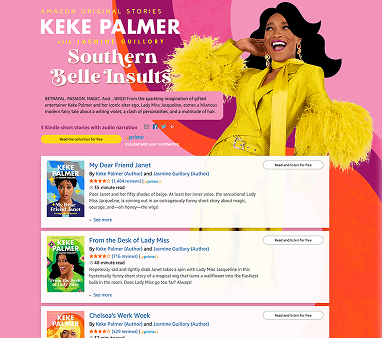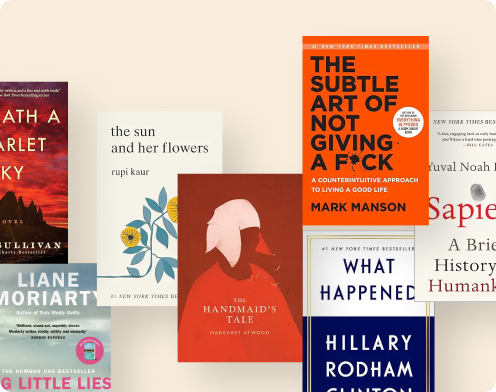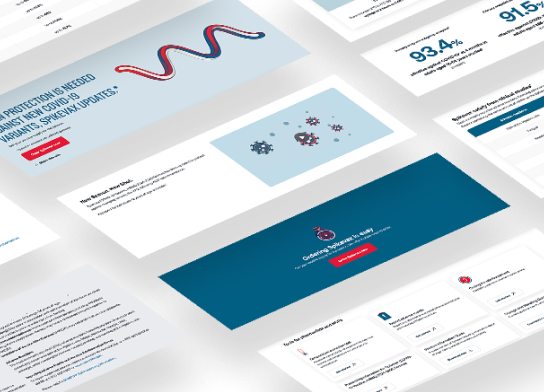AMAZON DASH CART
From Cart to Smart: Using AI to Transform the In-Store Experience
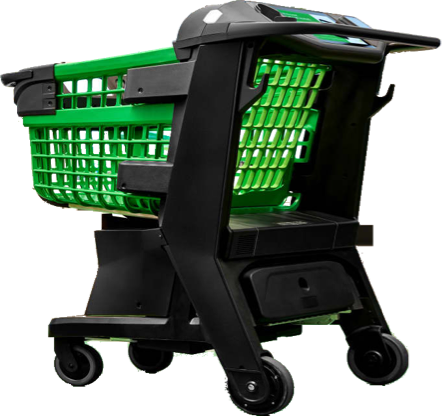
Overview
Amazon was exploring whether a "smart" could be a viable alternative to the “Amazon Go” experience where customers could walk out of a store without checking out. I was the Sr. UX design lead on this concept project, responsible for the user interface and bringing it to 22 Amazon Fresh stores nationwide
Role
Sr. UX Design Lead
responsibilities
UX design, user research, product strategy
collaborators
Industrial designers, store designers, engineers, product managers, user research lead; Alexa team (cross-organizational)
impact
Launched in 22 Amazon Fresh stores nationwide, generating media buzz and drove a significant business pivot
The project
Customer problems
Shoppers are frustrated when having to wait in line to check out, and they want to save money wherever they can. Stores want customers to buy more items so that they can turn a profit.
Business problems
Amazon needed to understand if a “smart” shopping cart would be a cost-effective alternative to the “Just-walk-out” experience. Simultaneously, it needed to drive media traffic to the opening of Amazon Fresh stores.
Success metrics
Help Amazon experiment with different user experiences and understand if the concept of a “smart” shopping cart is viable.
Approach
Align
My first step as a designer is not doing any design at all. Because the team was new to UX processes, I wrote a Design Brief and had all stakeholders sign off on it. The goal was to refocus the project on the customer and ensure alignment on key areas such as the customer problems, tenets by which we would work, and the hypothesis.
Customer problem
Business problem
Success metric
Constraints
Tenets
Milestones
Understand
My next step was to create high-level storyboards of the shopping experience to understand the holistic customer journey in the physical space. These storyboards were also used to kick off discussions with stakeholders, like what the in-store signage we would need and where customers needed to exit the store.
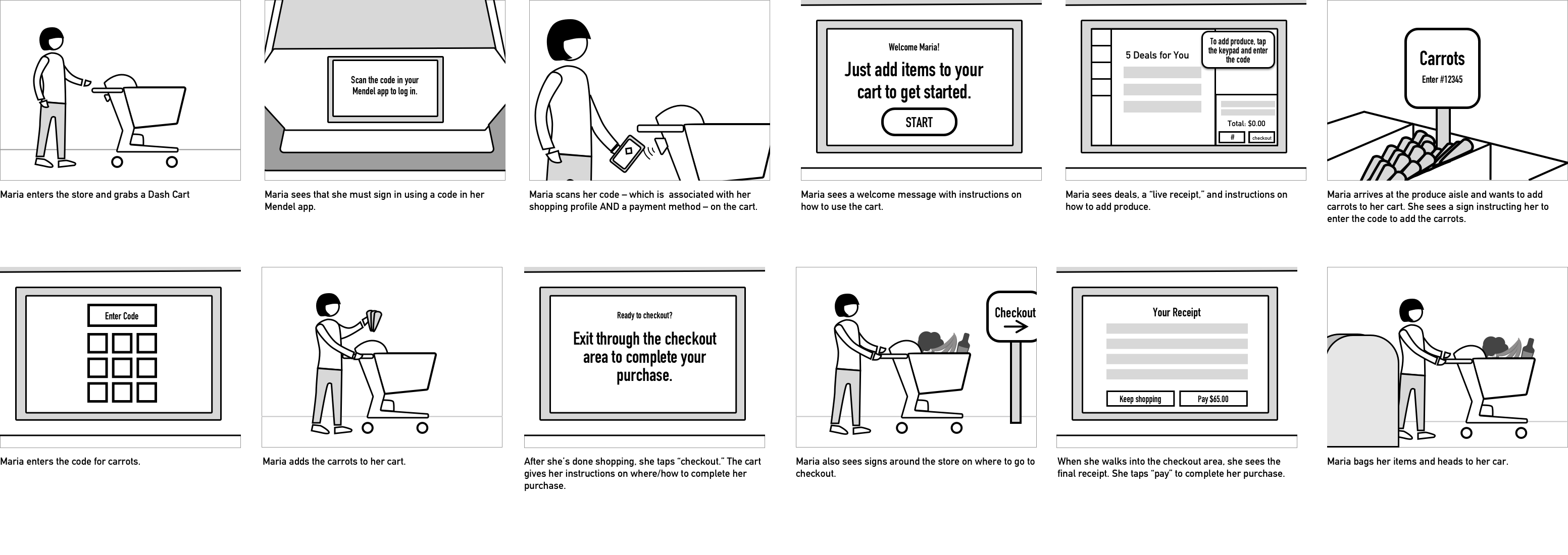
Design and question
I did framework explorations to understand how information should be grouped together, when information should be surfaced, and how it might extend to support other features in the future. Then, I mapped out every user interaction required to achieve the goal of “checking out with my selections.” Some areas had more than one potential solution, and I mapped out those flows as well. Then, I documnted my questions and learning goals.
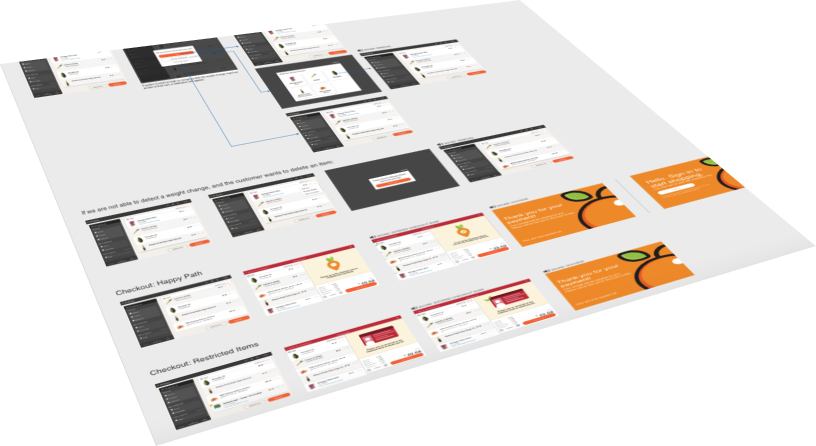
Moderated research
To best simulate the in-store experience, I created a prototype using Protopie, which allowed me to remotely control the UI on the tablet with another device. I then strapped the tablet on the physical cart prototype.
Initially, I worked closely with the user research team to create a prototype of the cart in an in-store setting. For subsequent sessions when the user research team was not available, I took on the role of the research lead.
We conducted several rounds of testing. After each round, we would synthesize the data, and I would iterate on the design for the next round.
Launch and learn
We officially "launched" the cart to customers, but we still considered it to be a prototype. Our goal was to further learn how customers were using the cart "in the wild." We continued to perform qualitative research, which we could then cross-reference with metrics. Our research helped inform the strategy for the next version of the Dash Cart.
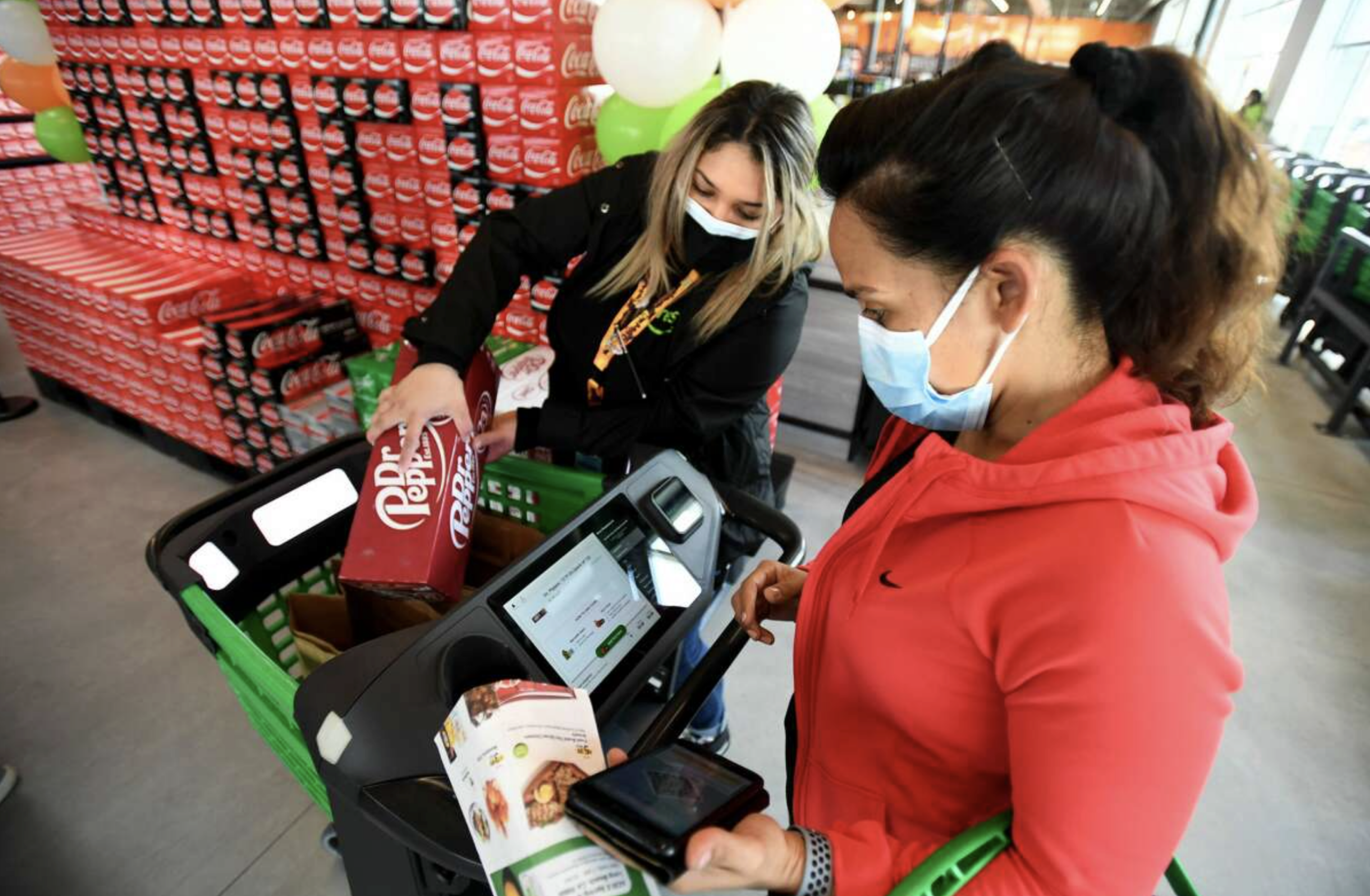
More iterations
I went back to the lab with all my learnings and iterated on v2 of the cart. I proposed a strategic pivot to refocus the cart on recommendations and deals instead of fast and easy checkout.
Key insights
Shopping was faster...but only when nothing went wrong
Customers quickly learned the how the cart worked and the technical constraints and adjusted their behavior to increase success.
Value of the real-time total
Customers found the most value in seeing their real-time savings and total
The monkey business illusion
In a busy grocery setting, a third of customers didn’t notice the screen at all. Even those who saw it only looked at the screen when they needed to complete a task.
The result
Initial “launch”
The initial concept launched in 22 Amazon Fresh stores nationwide:
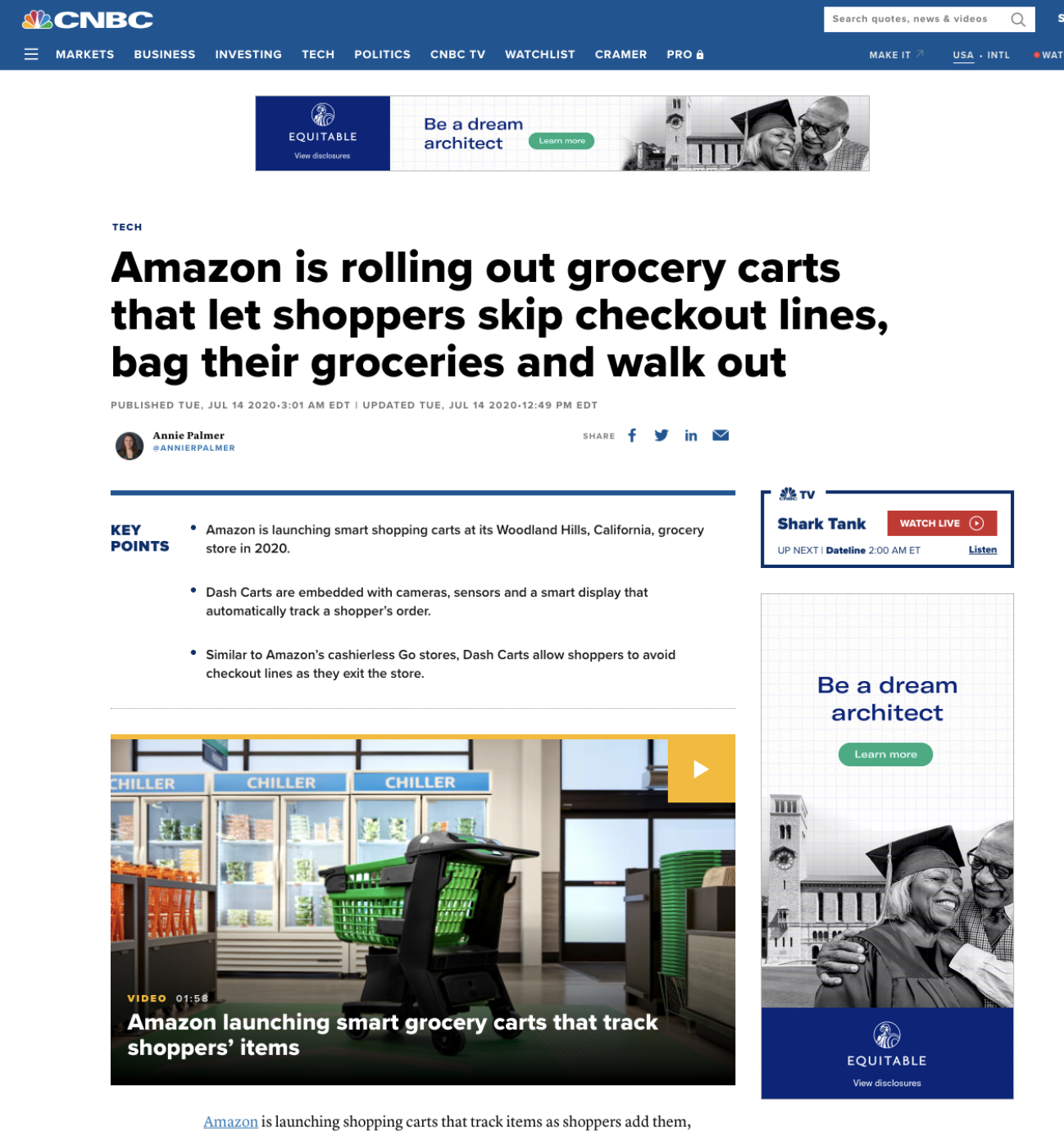
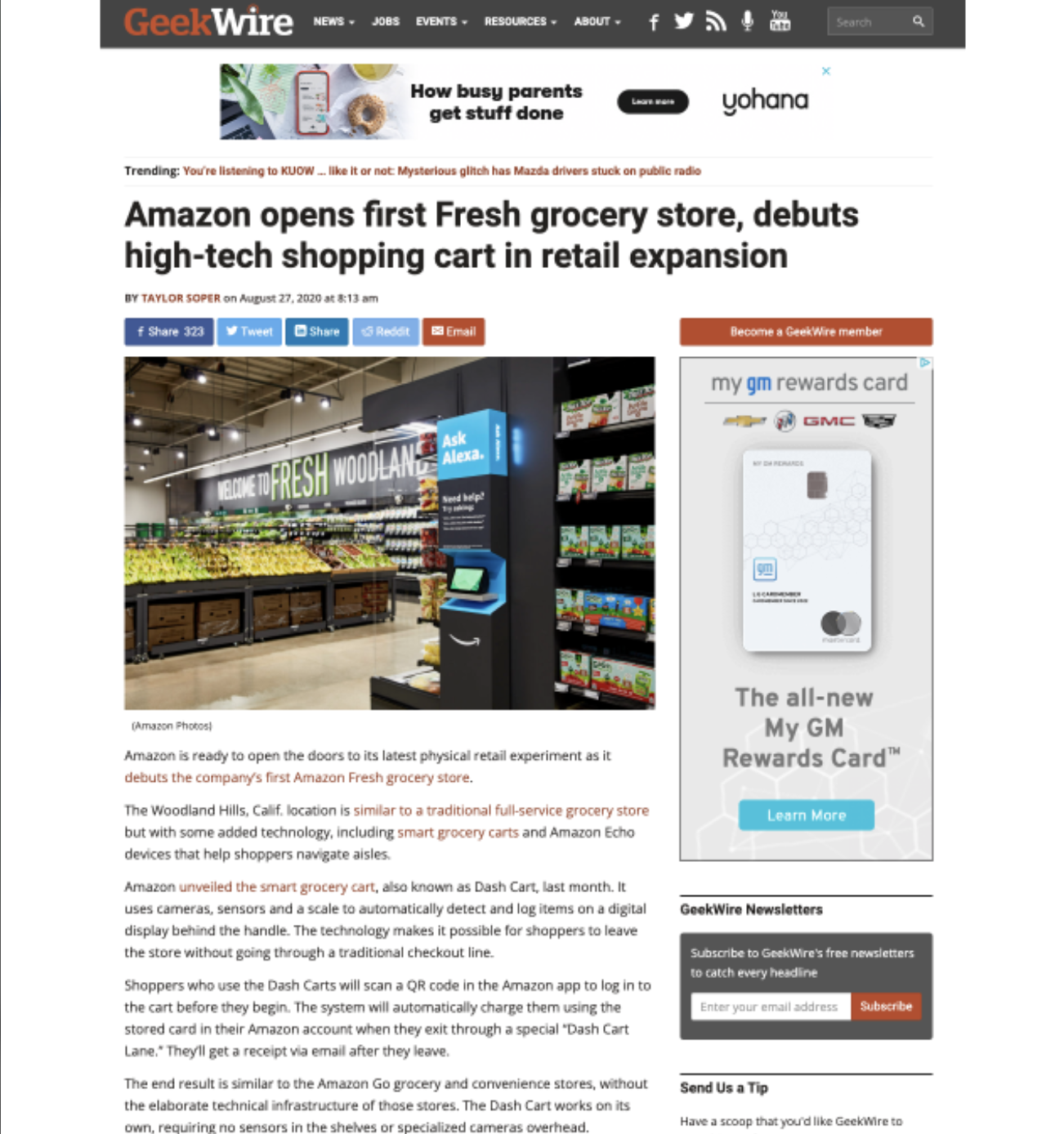
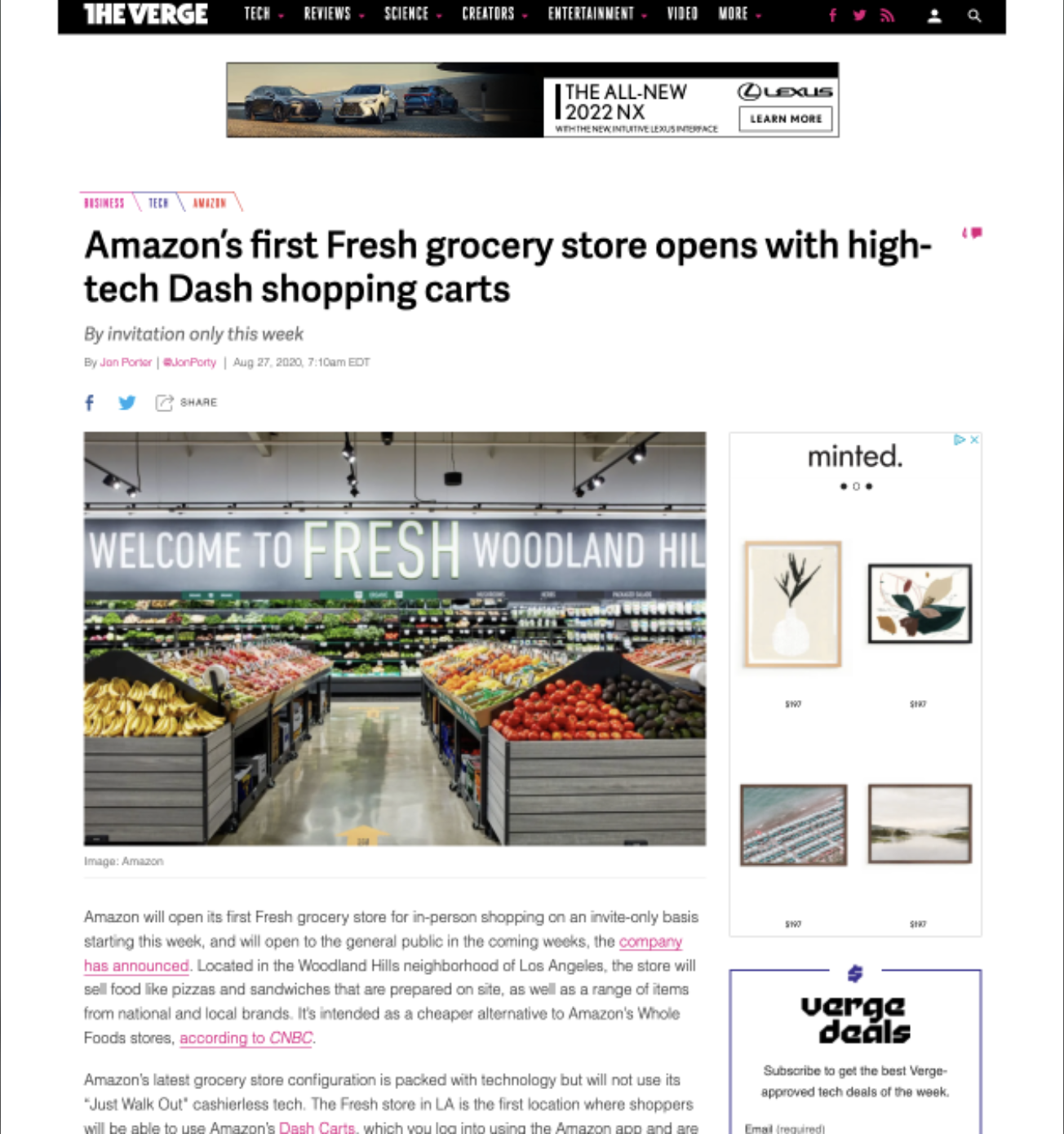
Subsequent “launch”
After the launch, I proposed a new design strategy that emphasized real-time, personalized shopping recommendations powered by AI that launched in subsequent versions of the shopping cart.
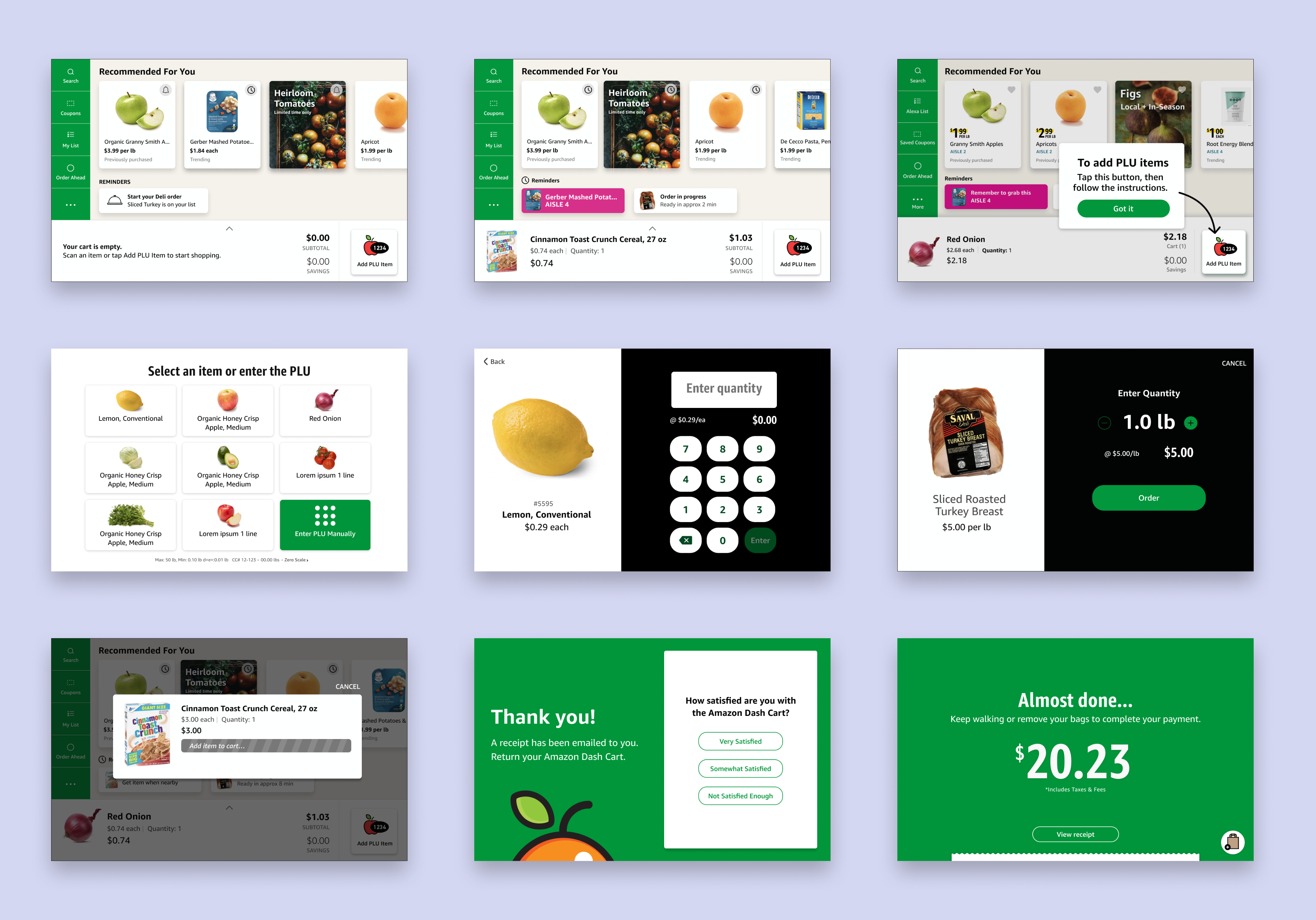
The business impact
Launched in 22 stores nationwide
The Dash Cart brought significant media attention and buzz to the Amazon Fresh store launches, meeting a key business goal to market its stores as high-tech and innovative.
Led to a key business pivot
My work directly led to a key pivot for the business, which was to refocus efforts on deals and savings.
AMAZON DASH CART
From Cart to Smart: Using AI to Transform the In-Store Experience

Overview
Amazon was exploring whether a "smart" could be a viable alternative to the “Amazon Go” experience where customers could walk out of a store without checking out. I was the Sr. UX design lead on this concept project, responsible for the user interface and bringing it to 22 Amazon Fresh stores nationwide
Role
Sr. UX Design Lead
responsibilities
UX design, user research, product strategy
collaborators
Industrial designers, store designers, engineers, product managers, user research lead; Alexa team (cross-organizational)
impact
Launched in 22 Amazon Fresh stores nationwide, generating media buzz and drove a significant business pivot
The project
Customer problems
Shoppers are frustrated when having to wait in line to check out, and they want to save money wherever they can. Stores want customers to buy more items so that they can turn a profit.
Business problems
Amazon needed to understand if a “smart” shopping cart would be a cost-effective alternative to the “Just-walk-out” experience. Simultaneously, it needed to drive media traffic to the opening of Amazon Fresh stores.
Success metrics
Help Amazon experiment with different user experiences and understand if the concept of a “smart” shopping cart is viable.
Approach
Align
My first step as a designer is not doing any design at all. Because the team was new to UX processes, I wrote a Design Brief and had all stakeholders sign off on it. The goal was to refocus the project on the customer and ensure alignment on key areas such as the customer problems, tenets by which we would work, and the hypothesis.
Customer problem
Business problem
Success metric
Constraints
Tenets
Milestones
Understand
My next step was to create high-level storyboards of the shopping experience to understand the holistic customer journey in the physical space. These storyboards were also used to kick off discussions with stakeholders, like what the in-store signage we would need and where customers needed to exit the store.

Design and question
I did framework explorations to understand how information should be grouped together, when information should be surfaced, and how it might extend to support other features in the future. Then, I mapped out every user interaction required to achieve the goal of “checking out with my selections.” Some areas had more than one potential solution, and I mapped out those flows as well. Then, I documnted my questions and learning goals.

Moderated research
To best simulate the in-store experience, I created a prototype using Protopie, which allowed me to remotely control the UI on the tablet with another device. I then strapped the tablet on the physical cart prototype.
Initially, I worked closely with the user research team to create a prototype of the cart in an in-store setting. For subsequent sessions when the user research team was not available, I took on the role of the research lead.
We conducted several rounds of testing. After each round, we would synthesize the data, and I would iterate on the design for the next round.
Launch and learn
We officially "launched" the cart to customers, but we still considered it to be a prototype. Our goal was to further learn how customers were using the cart "in the wild." We continued to perform qualitative research, which we could then cross-reference with metrics. Our research helped inform the strategy for the next version of the Dash Cart.

More iterations
I went back to the lab with all my learnings and iterated on v2 of the cart. I proposed a strategic pivot to refocus the cart on recommendations and deals instead of fast and easy checkout.
Key insights
Shopping was faster...but only when nothing went wrong
Customers quickly learned the how the cart worked and the technical constraints and adjusted their behavior to increase success.
Value of the real-time total
Customers found the most value in seeing their real-time savings and total
The monkey business illusion
In a busy grocery setting, a third of customers didn’t notice the screen at all. Even those who saw it only looked at the screen when they needed to complete a task.
The solution
Initial “launch”
The initial concept launched in 22 Amazon Fresh stores nationwide:



Subsequent “launch”
After the launch, I proposed a new design strategy that emphasized real-time, personalized shopping recommendations powered by AI that launched in subsequent versions of the shopping cart.

The business impact
Launched in 22 stores nationwide
The Dash Cart brought significant media attention and buzz to the Amazon Fresh store launches, meeting a key business goal to market its stores as high-tech and innovative.
Led to a key business pivot
My work directly led to a key pivot for the business, which was to refocus efforts on deals and savings.
AMAZON DASH CART
From Cart to Smart: Using AI to Transform the In-Store Experience

Overview
Amazon was exploring whether a "smart" could be a viable alternative to the “Amazon Go” experience where customers could walk out of a store without checking out. I was the Sr. UX design lead on this concept project, responsible for the user interface and bringing it to 22 Amazon Fresh stores nationwide
Role
Sr. UX Design Lead
responsibilities
UX design, user research, product strategy
collaborators
Industrial designers, store designers, engineers, product managers, user research lead; Alexa team (cross-organizational)
impact
Launched in 22 Amazon Fresh stores nationwide, generating media buzz and drove a significant business pivot
The project
Customer problems
Shoppers are frustrated when having to wait in line to check out, and they want to save money wherever they can. Stores want customers to buy more items so that they can turn a profit.
Business problems
Amazon needed to understand if a “smart” shopping cart would be a cost-effective alternative to the “Just-walk-out” experience. Simultaneously, it needed to drive media traffic to the opening of Amazon Fresh stores.
Success metrics
Help Amazon experiment with different user experiences and understand if the concept of a “smart” shopping cart is viable.
Approach
Align
My first step as a designer is not doing any design at all. Because the team was new to UX processes, I wrote a Design Brief and had all stakeholders sign off on it. The goal was to refocus the project on the customer and ensure alignment on key areas such as the customer problems, tenets by which we would work, and the hypothesis.
Customer problem
Business problem
Success metric
Constraints
Tenets
Milestones

Understand
My next step was to create high-level storyboards of the shopping experience to understand the holistic customer journey in the physical space. These storyboards were also used to kick off discussions with stakeholders, like what the in-store signage we would need and where customers needed to exit the store.
Design and question
I did framework explorations to understand how information should be grouped together, when information should be surfaced, and how it might extend to support other features in the future. Then, I mapped out every user interaction required to achieve the goal of “checking out with my selections.” Some areas had more than one potential solution, and I mapped out those flows as well. Then, I documnted my questions and learning goals.


Moderated research
To best simulate the in-store experience, I created a prototype using Protopie, which allowed me to remotely control the UI on the tablet with another device. I then strapped the tablet on the physical cart prototype.
Initially, I worked closely with the user research team to create a prototype of the cart in an in-store setting. For subsequent sessions when the user research team was not available, I took on the role of the research lead.
We conducted several rounds of testing. After each round, we would synthesize the data, and I would iterate on the design for the next round.
Launch and learn
We officially "launched" the cart to customers, but we still considered it to be a prototype. Our goal was to further learn how customers were using the cart "in the wild." We continued to perform qualitative research, which we could then cross-reference with metrics. Our research helped inform the strategy for the next version of the Dash Cart.

More iterations
I went back to the lab with all my learnings and iterated on v2 of the cart. I proposed a strategic pivot to refocus the cart on recommendations and deals instead of fast and easy checkout.
Key insights
Shopping was faster...but only when nothing went wrong
Customers quickly learned the how the cart worked and the technical constraints and adjusted their behavior to increase success.
Value of the real-time total
Customers found the most value in seeing their real-time savings and total
The monkey business illusion
In a busy grocery setting, a third of customers didn’t notice the screen at all. Even those who saw it only looked at the screen when they needed to complete a task.
The result
Initial “launch”
The initial concept launched in 22 Amazon Fresh stores nationwide:



Subsequent “launch”
After the launch, I proposed a new design strategy that emphasized real-time, personalized shopping recommendations powered by AI that launched in subsequent versions of the shopping cart.

The business impact
Launched in 22 stores nationwide
The Dash Cart brought significant media attention and buzz to the Amazon Fresh store launches, meeting a key business goal to market its stores as high-tech and innovative.
Led to a key business pivot
My work directly led to a key pivot for the business, which was to refocus efforts on deals and savings.
